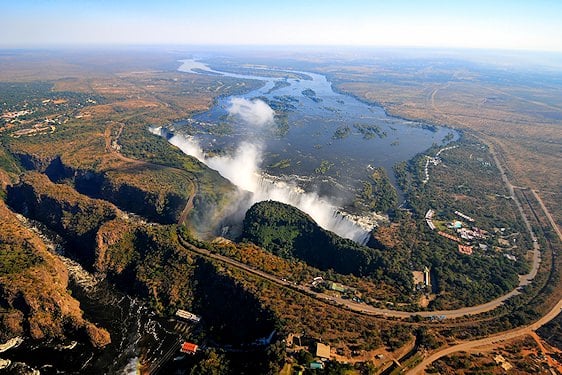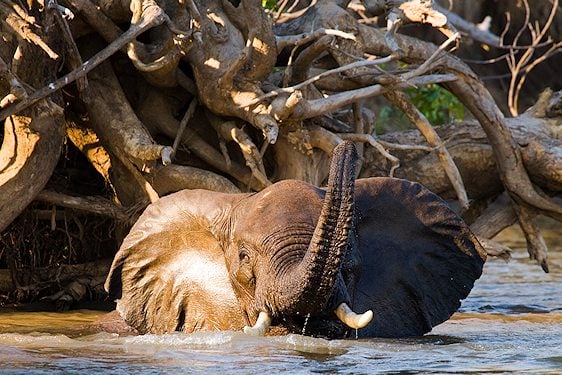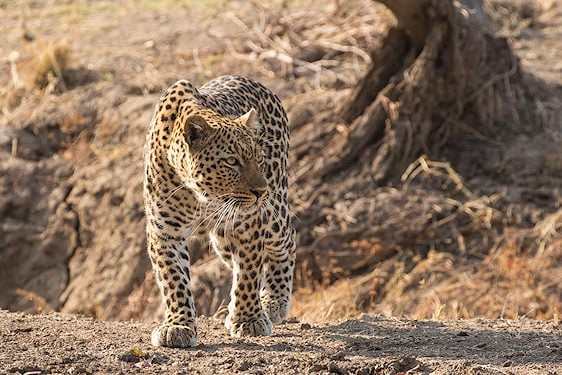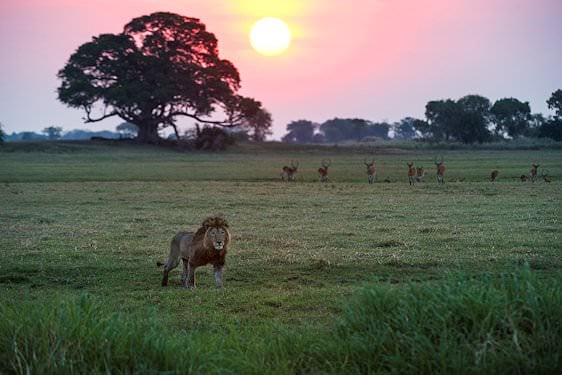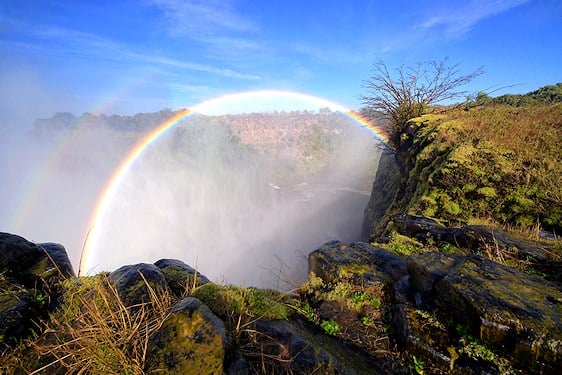Zambia Travel Destinations and Vacations
Help Me Plan- Home
- >
- African Travel
- >
- Zambia
Zambia Destination Guide
We’ve summarized the key information you’ll need when planning a visit to Zambia, from how to get there to the best seasons and park access. Many travelers come for the mighty Victoria Falls on the Zambezi River and stay for Zambia’s spectacular, uncrowded safaris.
Getting to Zambia
Most international travelers arrive via Lusaka (LUN) or Livingstone (LVI). South Luangwa is commonly accessed via domestic flights to Mfuwe (MFU). Kafue and Lower Zambezi are reached by a mix of scheduled and charter flights plus 4x4 transfers. Cross-border access to Victoria Falls and Chobe (Botswana) is straightforward on guided trips.
Weather & Best Time to Visit
- May–Aug (Cool & dry): Pleasant temperatures; great general game viewing.
- Sep–Nov (Hot & dry): Peak big-game viewing as water sources shrink; expect heat, especially in valleys.
- Dec–Apr (Warm & wet / “Emerald Season”): Lush landscapes and superb birding; some areas have seasonal road closures.
Visa Information
Zambia operates an e-visa system for many nationalities. For visitors combining Zimbabwe and day trips to Botswana, the KAZA Univisa (when available) covers Zambia and Zimbabwe for up to 30 days and day trips to Botswana. Requirements can change — verify the latest rules before travel. Official Zambia Visa Information and Application Process.
Medical Considerations
Malaria is present in many areas — consult your physician about prophylaxis and bring repellents. Ensure routine vaccinations (MMR, DTP, varicella, polio) are current. Hepatitis A and typhoid are commonly recommended for travelers. A yellow fever vaccination certificate may be required if arriving from/transiting through a risk country.
Safety
Safari camps and guided operations emphasize safety. As with any travel, keep valuables discreet and follow your guide’s instructions, especially around wildlife and on the river.
Traveling Around
Guided road transfers use comfortable, air-conditioned vehicles where roads permit. In private reserves and national parks, game drives use open 4x4s. Light aircraft charters connect remote camps efficiently; soft-luggage limits (often ~15–20 kg) typically apply.
Top Travel Destinations in Zambia
Zambia offers some of Africa’s most rewarding, uncrowded safari experiences — plus the world wonder of Victoria Falls.
One of the world’s most awe-inspiring natural sights, with seasonal activities that change with the Zambezi’s flow.
Wildlife and birdlife along the northern banks of the Zambezi River — renowned for canoeing, boating (seasonal), and big-game.
Home of the walking safari, dense concentrations of wildlife, and the endemic Thornicroft’s giraffe.
Zambia’s oldest and largest park — vast, varied, and wonderfully wild, including the famed Busanga Plains.
Small park protecting riverine forest and sections of rainforest by the Falls; also home to protected white rhinos.
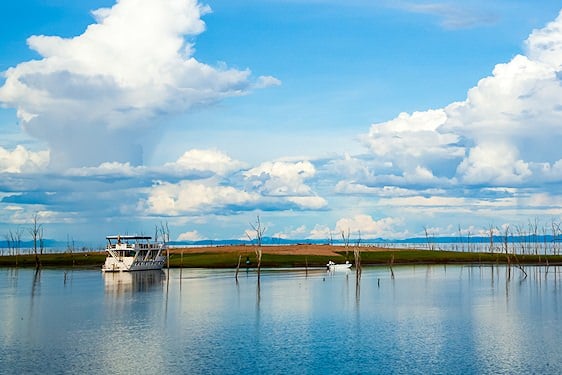
Lake Kariba
Ideal for houseboats, fishing, and relaxing on Africa’s great man-made lake.
Zambia Vacation Options & Travel Tips
Zambia vacations blend world-class, off-the-beaten-track safaris with the spectacle of Victoria Falls.

Tours, Safaris & Honeymoons
Browse our thoughtfully crafted safari tours.

Tailor-Made Vacation Packages
All our tours and safaris can be customized.

Travel Tips & Advice
Important information about visiting Southern Africa.
Other Destinations in Zambia
Beyond the headline parks, Zambia’s lakes and lesser-known reserves offer rare spectacles and authentic wilderness.
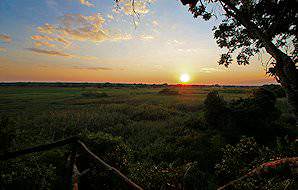
Kasanka National Park
Famed for the Oct–Dec bat migration and rich biodiversity; a memorial to David Livingstone lies nearby.
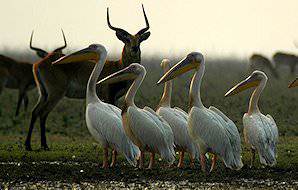
Lochinvar National Park
On the Kafue Flats, known for 400+ bird species and large herds of Kafue lechwe.
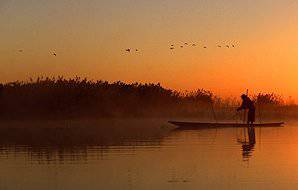
Lake Bangweulu
Vast seasonal wetlands where shoebill storks are sought-after sightings.
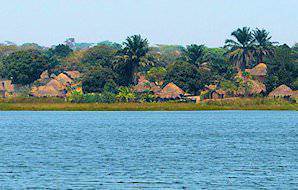
Lake Mweru
A remote lake on the DRC border, ideal for intrepid travelers seeking off-the-map experiences.
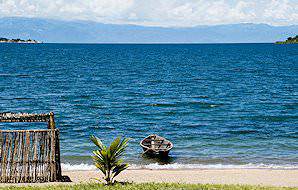
Lake Tanganyika
A deep Rift Valley lake with superb biodiversity and rustic-to-luxury lodge options.
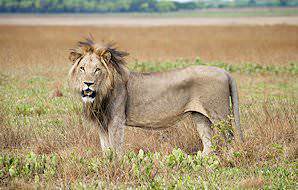
Liuwa Plain National Park
Remote grasslands with seasonal wildebeest migration, rare predators, and vast open skies.
Zambia Travel Video & Facts
Safari packages focusing on Zambia’s primary national parks and Victoria Falls.
Zambia is a sparsely populated country with a few major urban centers. Livingstone is a tourism hub for Victoria Falls. National parks like South Luangwa, Kafue, and Lower Zambezi offer exceptional safaris with comparatively low visitor numbers.
The Great Zambezi River
The Zambezi is Southern Africa’s great river, sustaining floodplains and wetlands from its upper reaches through Victoria Falls and Lake Kariba to the Indian Ocean. Stretching for well over 2,500 km (about 1,550 miles), it is Africa’s fourth-longest river and the lifeblood of many communities and ecosystems.
- Forms the border between Zambia and Zimbabwe for much of its middle course
- Plunges over the world-famous Victoria Falls, one of the Seven Natural Wonders
- Widens into Lake Kariba, a major hydroelectric power source
- Supports exceptional wildlife sightings along its banks
- Offers canoeing and kayaking trips for adventurous travelers
- Provides sunset cruises near Victoria Falls and Lower Zambezi
- Hosts excellent tigerfishing, particularly in the Upper Zambezi
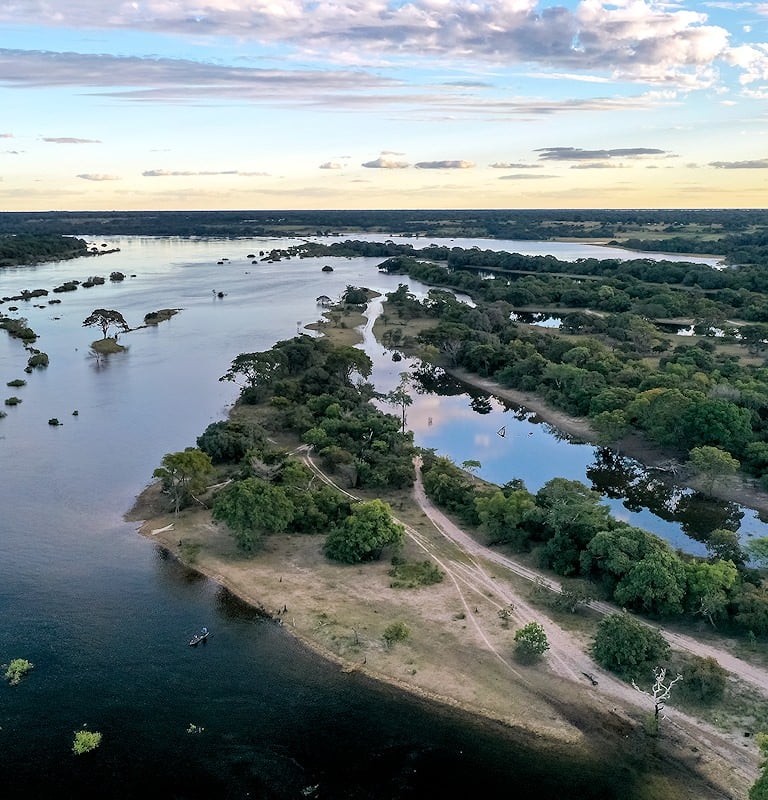
Foods to try in Zambia
Local flavors add to the uniqueness of your Zambian safari.
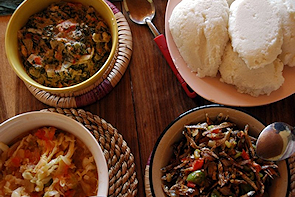
Nsima
The national staple — a thick maize porridge — typically eaten with two relishes: one protein (ndiyo) and one vegetable (masamba).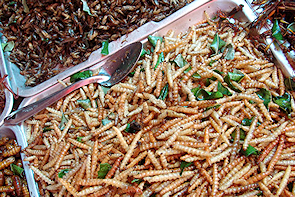
Termites
A rainy-season delicacy, sautéed until crisp and nutty — not for everyone, but authentically local.
Tilapia
A popular freshwater fish (notably from Kariba), delicious grilled and served simply.
Crocodile
Served in some restaurants as steaks or burgers — mild in flavor, often compared to chicken.Zambia Travel FAQ
Yes in cities and towns (Lusaka, Livingstone). Remote safari camps in South Luangwa, Kafue, and Lower Zambezi often have limited or no connectivity; many offer basic Wi-Fi in common areas. Plan to unplug between game drives.
Angola, Botswana, the Democratic Republic of the Congo, Malawi, Mozambique, Namibia, Tanzania, and Zimbabwe.
Reputable lodges and hotels provide safe bottled or filtered water. Avoid tap water in rural areas unless your lodge confirms it’s filtered.
South Luangwa (walking safaris and high wildlife densities), Lower Zambezi (canoeing/boating on the Zambezi with big game along the banks), and Kafue (vast, varied habitats and the Busanga Plains). All are far less crowded than many regional parks.
Livingstone/Victoria Falls can be moderate. Remote parks often require charter flights or long 4×4 transfers, which raise costs—but deliver exceptional wilderness and guiding. Traveling outside peak months can help budgets.
Open-vehicle game drives, guided walking safaris, canoeing on the Zambezi, seasonal boat cruises, birding, and catch-and-release fishing where permitted. Availability varies by park and season.
Yes. Protected white rhinos can be viewed in Mosi-oa-Tunya National Park (Zambia side of Victoria Falls) with rangers. Black rhino conservation occurs in North Luangwa on limited, specialist activities.
Most travelers fly into Lusaka (LUN) or Livingstone (LVI). South Luangwa connects via Mfuwe (MFU). Lower Zambezi and Kafue typically use scheduled/charter flights plus 4×4 transfers. Luggage on light aircraft is usually soft bags, ~15–20 kg.
Yes. Lower water (typically Aug–Dec) reveals the canyon and can allow Devil’s Pool and Livingstone Island (water-level dependent). For thunderous flow and spray, aim for higher-water months; the Zimbabwe side often shows more water year-round.
Proof of vaccination may be required if you are coming from or transiting through a yellow fever risk area. Always check the latest entry rules before travel.
Zambia’s elevation keeps temperatures milder than many tropical countries. Cool-dry (May–Aug) is pleasant; hot-dry (Sep–Nov) brings peak game viewing but high heat in valleys; warm-wet (Dec–Apr) delivers lush greenery and superb birding—though some roads close. Many camps in remote areas operate mainly in the dry months.
Popular Activities
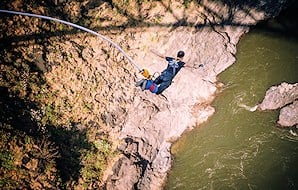
Victoria Falls Activities
Victoria Falls offers everything from leisurely sunset cruises to adrenaline rushes like white-water rafting and bungee jumping (water-level dependent).
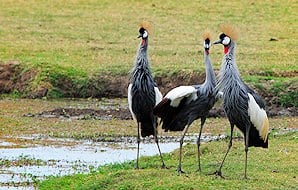
Birding
Zambia boasts around 780+ recorded species. Top birding includes the Kafue Flats (Lochinvar/Blue Lagoon), Bangweulu wetlands, Busanga Plains (Kafue), and South Luangwa in the green season.
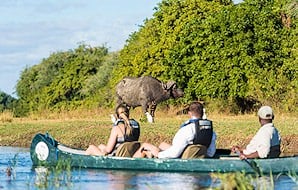
Canoeing
The Zambezi near Livingstone and along the Lower Zambezi offers scenic canoe trips with guided safety protocols. Lakes and other rivers also offer opportunities depending on water levels.
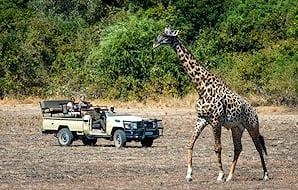
Mobile Safaris
Classic multi-day camping journeys evoke the spirit of early explorers. Allow at least a week for a mobile safari to fully experience the wilderness.
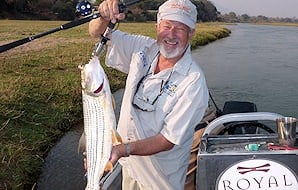
Fishing Trips
Zambia is a freshwater angler’s paradise — tigerfish in the Upper Zambezi and diverse species on Lake Tanganyika. Remote hotspots often require small-plane access or rugged 4x4 travel.
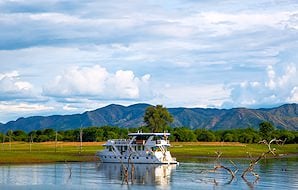
House-Boating
Lake Kariba is ideal for a relaxing houseboat holiday. The Zambian side is quieter than Zimbabwe’s; best months are May–Sep.
Sites of Interest
Kalambo Falls
At about 235 m (772 ft), one of Africa’s highest single-drop waterfalls. The site is renowned for archaeological finds, including evidence of very early controlled fire use and Late Stone Age tools, making it significant beyond the scenery alone.
Nsalu Cave
In Central Zambia, Nsalu (Nsalu Cave/Nsalu Hills) features rock art thought to span mainly Late Stone Age to later periods. Though relatively neglected, it makes an intriguing stop when traveling in the Bangweulu/Kasanka region.
The People
Overview
Zambia is ethnically diverse, with many cultures intersecting in towns and cities through intermarriage and migration. Rural areas preserve strong traditions — Barotseland in the west is a classic example.
Lozi
Each year the Lozi people move to avoid Upper Zambezi floods. The Ku-omboka, the king’s ceremonial migration (typically Feb–Apr, water-dependent), is Zambia’s most famous traditional ceremony.
Kunda
The Kunda of the Luangwa Valley trace origins to migrations from the Luba area (DRC) in the 1800s. Traditionally hunters, most are now subsistence farmers facing the challenges of extreme seasons and crop-raiding wildlife.
Languages
English is the official language. Widely spoken local languages include Bemba (Copperbelt/Northern), Nyanja/Chichewa (Lusaka/Eastern), Tonga (Southern), Lozi (Western), and others such as Kaonde, Lunda, Luvale, Nsenga, and Tumbuka.
Geography
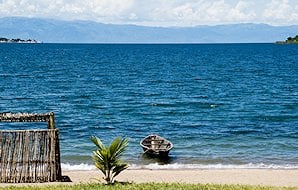
Water Sources
Great Rift Lakes like Tanganyika and border Lakes such as Mweru teem with fish and support local livelihoods. Wetlands and floodplains are vital to Zambia’s ecology.
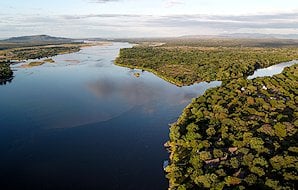
Zambezi River
Stretching for well over 2,500 km, Africa’s fourth-longest river forms much of the border with Zimbabwe, plunges over Victoria Falls, widens into Lake Kariba, and flows on to the Indian Ocean.
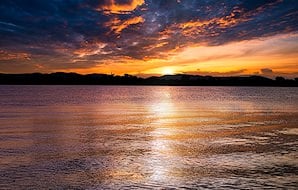
Seasonal Extremes
Rivers like the Luangwa and Kafue swell and shrink dramatically through the year, transforming adjacent plains and wetlands — and concentrating wildlife during the dry months.

